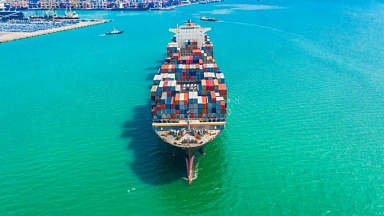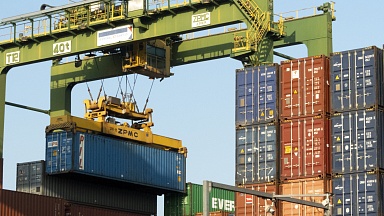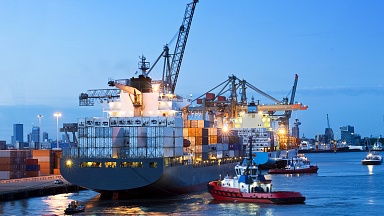The COVID-19 pandemic triggered a succession of shocks and waves, each setting off their own spinoff events. The extent and impact of disruption varied considerably, however, between regions, economic sectors, and segments of the shipping market. The recovery is similarly proving uneven, with differences in the levels and scale of policy support and unequal access to vaccines.
Although the initial impact on maritime transport was less dramatic than predicted, the outlook is shadier. The timescale for a lasting recovery will depend on the progress of the pandemic, the extent and timing of world vaccination plans, and the duration of policy support measures. At present the nascent recovery is being threatened by supply-chain breaks and logistical bottlenecks that are disrupting shipping markets and pushing cost levels to historic highs.
The study found that the coronavirus also accelerated existing megatrends — geopolitical, technological and environmental. They have developed slowly over the past decade, but accelerated during the pandemic and continue to transform maritime transport and trade:
Geopolitics — The COVID-19 health crisis underscored the extent to which nations are economically and socially interdependent — integrated through global supply chains and their underlying extended maritime transport networks. In the face of heightened geopolitical risks and rising trade tensions, many countries and enterprises are shifting their mindsets and now perceive global interdependency partly as a vulnerability. To mitigate risks and build resilience — they are therefore aiming to reduce their reliance on distant foreign suppliers.
Resilience — The COVID-19 disruption has tested supply chains and their underlying business models, and put transport and logistics networks under strain. Enterprises and governments are aiming to make supply chains more robust and resilient, including by looking to diversify their business partners and suppliers. This will involve a new balance between local, regional and global production. They are also reconsidering inventory and stock management strategies and the trade-offs between just-in-time and just-in-case supply chain models.
Technology — Customs officials, port workers, and transport operators increasingly recognize the value of new technologies and digitalization, not just as a way of boosting efficiency but also for maintaining business continuity at times of disruption. Technological innovations include advanced analytics, on-board sensors, communications technology, port-call optimization, blockchains, big data, and autonomous ships and vehicles. During the pandemic, these technologies have helped reduce physical contact, and keep ships moving, ports open and cross-border trade flowing. Technological advances have also stimulated consumer spending online and a growth in e-commerce. These trends will continue to redefine production and consumption patterns and the ways in which ships, ports and their hinterland connections deliver cargo and services.
Shipping market dynamics — In anticipation of future disruptions, carriers, shippers, ports, and inland transport operators will be rethinking their business and operating models to respond more flexibly to changing market conditions. Having seen the way in which the trade rebound stumbled against logistical bottlenecks and constrained capacity following the COVID-19 shock, they are likely to reconsider their levels of investment in shipping and ports as well as their planning operations. They can also anticipate potential greater regulation of shipping markets as national competition authorities step up their monitoring of freight rates and market behaviour and scrutinize rapid movements in shipping prices.
Decarbonization and the energy transition — Maritime transport is facing growing pressure to decarbonize and operate in a more sustainable way — issues that have also come to the fore as part of the post-pandemic recovery. With ongoing IMO work on greenhouse gas emission reduction in shipping providing further momentum, shipping is expected to change its fuel mix and use new technology and ship designs, alternative fuels and operational adjustments to cut its carbon and environmental footprint. For energy, shipping is not just a large-scale user but also a major carrier, so the industry will have to respond to lower demand for oil tankers and coal carriers and more for ships transporting hydrogen, ammonia and other alternative fuels.
Climate adaptation and resilience — Maritime transport infrastructure and services came under severe stress as a result of the pandemic and the closure of the Suez Canal. This was in addition to the ongoing dangers of climate change: over recent years extreme weather events, including floods, hurricanes and cyclones, have been causing frequent and intense disruptions for both coastal infrastructure and hinterland connections. With current climate projections pointing to a global warming trajectory exceeding the agreed targets under the Paris Agreement, the maritime industry and governments need to invest in adaptation and in climate-proofing maritime transport infrastructure and services, as well as accelerate the development of related legal, policy and technical measures, and capacity-building.
The maritime transport sector is now under unprecedented pressure from a set of external factors that push it to structural and difficult to predict changes.



